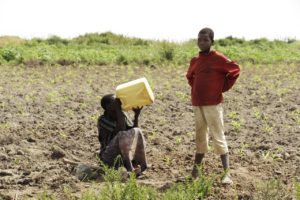Farming is the backbone of East African food production, as most of the food consumed is grown on the farms all around the region. Recently, however, famers have been unable to maximize output from their pieces of land due to several issues. Below is a list of the top farming problems in East Africa.
- Climate change
- Due to the rapid deforestation occurring in East Africa, the climate has changed drastically. Rainfall has reduced in most areas, and the seasons are unpredictable with extended dry spells. As a result, many farmers have been forced to plant their crops hoping that the wet seasons will come as usual, or to rely heavily on irrigation.
- High cost of farm inputs
- The cost of farm inputs is another of the top farming problems in East Africa. Though many farmers desire to use farm inputs that will maximize their yields, the financial resources to do so are not always available. Because most farm inputs are necessary yet expensive, the farmers are forced to use those inputs that are cheaper and of a lower quality. Also, most manufacturers are not willing to make their inputs more affordable and thus more accessible to the farmer.
- Access to credit
- Most financial institutions require that farmers hand over some piece of collateral or an asset before they give them any funding. Because most farmers do not have any assets that they can use as collateral, therefore, they are not able to access the much-needed finances that they need to improve their farming enterprises.
- Pests and diseases
- Nothing stresses a farmer more than seeing his entire crop wiped out by a disease or pest that he cannot control. Farmers may not always have the right information on control and prevention of these pests and diseases, or even what kind of damage they can cause to a crop while on the farm and after harvest.
- The increase of population in agricultural areas has caused soil nutrient deterioration, one of the top farming problems in East Africa. As such, several pieces of land are not going through the fallow periods needed to replenish lost nutrients, due to continuous cultivation all year long. As a result, yields have reduced drastically as the soil becomes more barren over the years.
- Lack of labour
- Famers face the challenge of getting laborers to work on their farms, as most young people are opting to move to urban areas in search of work. Also, getting semi-skilled and skilled farm laborers who can work unsupervised is a challenge. The farmer is therefore not able to maximize the productive capacity of his land.
- Poor infrastructure
- Most roads leading to the farming areas in East Africa are in bad condition, and sometimes impassable during rainy weather. As a result, the farmer is not able to get his produce to the consumer while it is still fresh, and sometimes has to rely on brokers who go to the farms and buy produce at a throwaway price. More often than not, the produce goes bad before it gets to the market, or before anyone comes to buy it.
- Obsolete farming methods
- Use of outdated farming methods is another of the top farming problems in East Africa. Many farmers are either unaware of or unable to access information on more cost effective and yield-enhancing farming methods. Also, even if they are aware of these methods, they are sometimes not convinced of their benefits, or are unable to purchase what is needed for implementation.
- Access to extension services
- All over East Africa, there are agricultural offices staffed with extension officers who have the task of educating and guiding farmers. Though the local agricultural office is ready and willing to help farmers in the area, however, extension officers are not able to reach every farm due to logistical challenges.
The top farming problems in East Africa listed above are faced by most farmers around the region. Perhaps the local authorities tasked with the job of supporting and encouraging farming activities in every region need to re-think their policies and priorities, as food production is critical to the survival of the people of East Africa.

